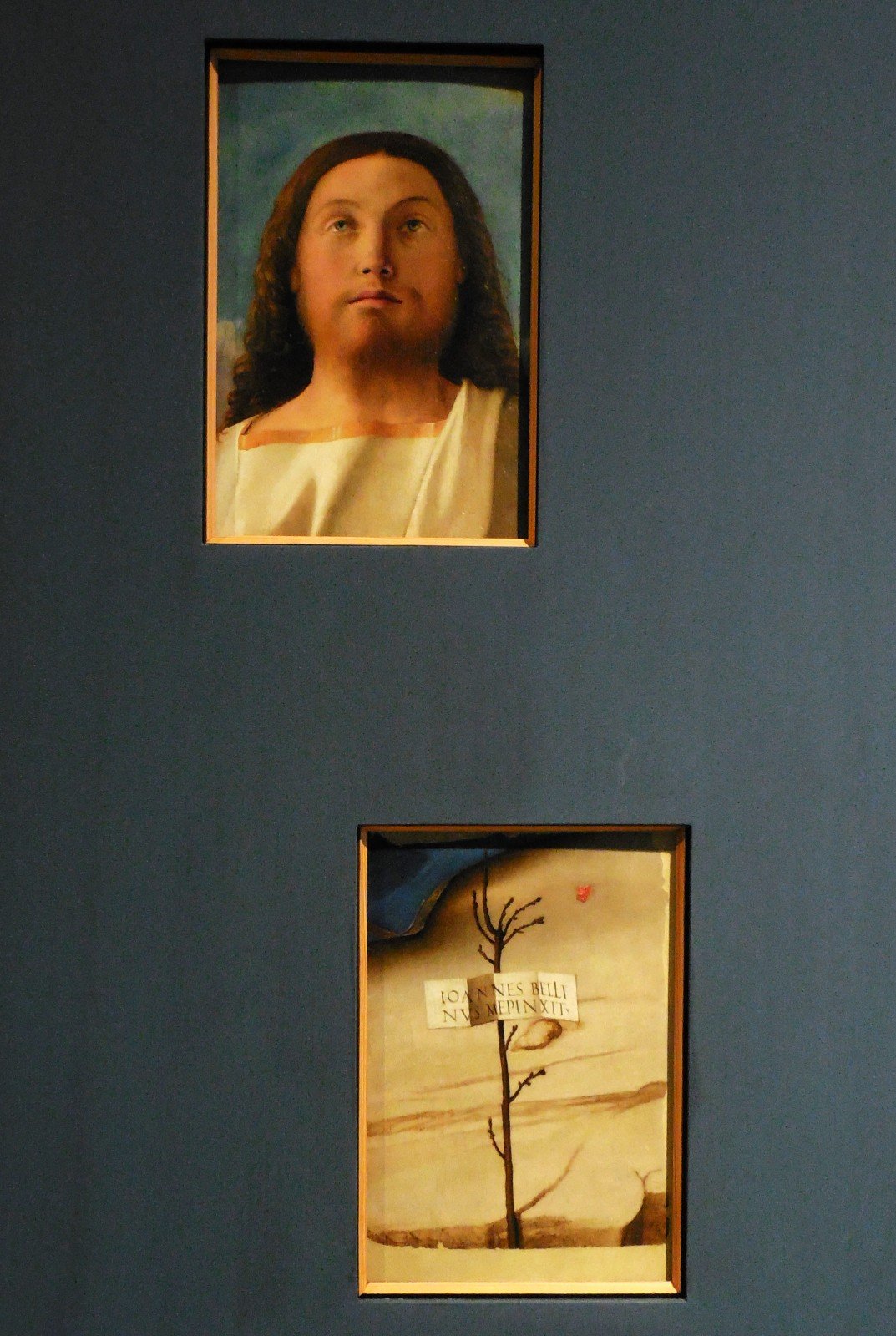The transfigured transfiguration: shaping Giovanni Bellini’s fragments
- Giovanni Bellini, Head of Christ and scroll. Fragments of a transfiguration, XV century, Gallerie dell’Accademia, Venice.
The meaning of the word transfiguration is: “a complete change of form or appearance into a more beautiful or spiritual state”. So, when speaking of the work by Giovanni Bellini nowadays entitled “Head of Christ and scroll. Fragments of a transfiguration” (at the Gallerie dell’Accademia in Venice), we are faced with a very interesting coincidence.
Originally, the painting’s subject was the transfiguration, as related in the scriptures (Christ after being secluded with three disciples, changed his aspect and showed himself to them with an extraordinary splendor of his person and an amazing whiteness of the robes): a subject extremely rich of spiritual symbols and concepts, that is considered indeed the most important representation in sacred art.
We can imagine that the original painting by Bellini had certainly respected the traditional iconography: Christ and the prophets floating well above the ground. This imagine is often seen in medieval depictions, and was popular in the Renaissance, too.
However, in today’s version there are some variables which have literally transformed the work. The painting was in fact very damaged, hence practically impossible to reconstruct in its entirety. So the restorers have decided to intervene by subtracting, thus neglecting the whole painting and isolating the only fragments preserved and legible: the face of Christ and the signature of the artist, which are exactly the symbols of the two protagonists of the work (if we exclude the third protagonist, or those who look to it).
We can say that, nowadays, the case of this work is therefore an involuntary conceptual evolution of a theme that was already conceptual. In fact, its title became its destiny: the transfiguration has been transfigured. And in the solemn isolation of the two elements, the work has increased its spiritual value.
As we said, word for word: “a complete change of form or appearance into a more beautiful or spiritual state”.
July 15, 2015

